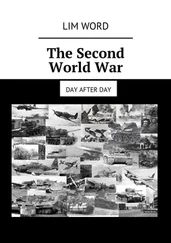Some figures are hard to believe. Although the source is dubious, a document reporting the flight and expulsion from a Pomeranian town describes the mass suicide of 600 people in an attempt to escape from the Red Army. [14] Bundesministerium für Vertriebene (ed.), Dokumentation der Vertreibung der Deutschen aus Ost-Mitteleuropa , vol. I/1 (Bonn 1954–6), p. 226.
Even before the taking of Berlin, some 500 inhabitants of Schönlanke in Pomerania are said to have taken their lives ‘for fear of the monsters from the East’. And in Demmin, Western Pomerania, between 700 and 1,000 people are reported to have committed suicide just before the arrival of the Red Army. [15] Goeschel, Selbstmord im Dritten Reich.
In the Berlin district of Pankow alone, there were 215 reported cases of suicide, mostly women, in a three-week period. Some women filled their pockets with bricks and jumped into the Havel. Others were victims of group suicides, being killed by their own parents or partners.
Nemmersdorf – a blueprint for what was to come
The massacre in Nemmersdorf was exploited for propaganda purposes to illustrate what awaited the Germans when the Red Army arrived. It was used by propaganda minister Goebbels to incite fear of the Russians and strengthen the determination of the population.
On 18 October 1944, the Soviets entered German territory for the first time and penetrated 60 kilometres into the German Reich along a 150-kilometre front. On 21 October, the Red Army reached Nemmersdorf, close to Königsberg (now Mayakovskoye in the Russian territory of Kaliningrad), a village with just under 700 inhabitants. The German Wehrmacht managed to retake the village on 23 October. The events that occurred in the forty-eight hours in between have still not been fully clarified today. Historians reckon that between nineteen and thirty people were killed in the two days, including thirteen civilians caught between the fronts. The Nazi regime used the occasion for propaganda, sending emissaries to report on the atrocities.
They claimed that seventy-two people had been killed, others had been tortured and crucified on barns and, above all, that all of the women and girls had been raped. Another reporter, by contrast, spoke of just two cases of rape and twenty-six people shot in the back of the head. Nemmersdorf was nevertheless chosen as the deterrent example of what would happen if the Germans were defeated. [16] See Kershaw, The End , pp. 114–17, 120, 122.
The newsreels showed horrifying pictures, probably staged, of dead women and children, whose skirts had been pushed up and their underwear removed. In the following months, Goebbels formed a pseudo-objective committee consisting of representatives of occupied and allied states to investigate the crimes committed by the Red Army. Witnesses of the events in Nemmersdorf were intimidated and put under pressure.
The Nemmersdorf massacre was instrumentalized until well into the post-war period as a rhetorical weapon against the ‘Red Peril’ from the East. The reports or rumours of villagers being nailed to barn doors or raped by Red Army soldiers were expanded to include gruesome details of castration and crucifixion. At some point, it was even claimed that there had been only one man among the victims, and that the seventy-two deaths were almost exclusively women and children. The photos by Goebbels’ propaganda people were taken at face value. It was not until the 1990s that new eyewitness accounts put the exaggerated reports into perspective. What really happened in autumn 1944 will probably never be finally cleared up.
Hope and fear
Fear was therefore the prevailing sentiment in the last months of the war, at least in Berlin and the eastern territories of the German Reich. The attitude to the Western occupiers was generally more neutral. The focus in the last two years of the war had been on preventing the advance of the ‘Red Peril’, and it had been hoped that after the war it would be possible to pick up on the points of similarity that had existed earlier with the Western Allies, and perhaps even to unite in facing up to the Bolshevists.
Many south Germans positively welcomed the occupation and, in view of Hitler’s call for total war, sought peace at any price. Even if the consequences of war were much easier to bear in the rural regions of Bavaria than in the bombed cities, the inhabitants there were nevertheless acutely affected by the situation that prevailed in the last weeks and months. Their own workers had been conscripted into the armed forces or were working for the war economy, and the relationship with foreign slave labourers and prisoners of war was problematic, to put it mildly. In addition, evacuees from northern Germany and Munich who were billeted in the smallest villages were regarded with considerable suspicion by the rural population on account of their supposed aversion to work and soft lifestyle (they slept in so late in the morning!). Alongside the stream of refugees and evacuees, who doubled the population of some villages, came straggling and undisciplined returning German soldiers. Summary courts sentenced deserters to death, and the men enlisted into the Volkssturm dug foxholes and requisitioned rooms at random in private houses. Nazi functionaries, mostly members of the SS, set about destroying vital transport routes, especially bridges, to slow down the enemy.
Practically no one believed in a miracle any more. On the contrary, they feared that any additional military resistance would simply enrage the enemy even further, and that the civilian population would have to bear the brunt. But fanatical Nazis continued to terrorize the warweary citizens. Those who expressed doubts about the final victory were still likely to be court-martialled and shot, even in the last hours before the capitulation. Most Bavarians therefore preferred to face up to the inevitable, keeping their white flags at hand in the hope that it would be the Americans who arrived first. Instead of wishing their own soldiers luck, they supported the enemy and longed for the German Wehrmacht to make itself scarce. It was often women who dismantled the anti-tank barriers to make it easier for the Allied soldiers.
Even in Berlin, there were many who failed to share the general hysteria and awaited liberation with black humour and defeatism, or even with anticipation. Margret Boveri, for example, suggests that the divergent expectations might be explained by the refusal of some people to give credence to the Nazi propaganda, and their personal experience through contact with other nations. Boveri herself had travelled as a foreign correspondent before and during the war, and in 1940 crossed the Soviet Union on the Trans-Siberian railway. This experience and, as she claimed, her upbringing in southern Germany meant that she was not so pessimistic about occupation by the Red Army. ‘The people of southern Germany, who have never come into contact with Russians, are much less prejudiced against them than the East Elbians, who have been fighting wars of succession with them for centuries. We are not afraid’, she wrote in her diary-like letters shortly before the fall of Berlin. [17] Margret Boveri, Tage des Überlebens: Berlin 1945 (Munich 1985), p. 43.
This would soon change.
On 21 August 1942, the Wehrmacht hoisted the German flag on the highest mountain in the Caucasus. Shortly afterwards, the German offensive came to a standstill, and the course of the war shifted, with the paradigmatic turning point in Stalingrad in early 1943 transforming a war of conquest of Lebensraum in the East into a retreat and a war to defend against Bolshevism. In Africa at the same time, the victorious progress against the British and Americans came to an end, and in May 1943 the German and Italian troops surrendered in North Africa. The German U-boats lost the Battle of the Atlantic, the British bombed the Ruhr and destroyed vital munitions production, and the great tank battle near Kursk turned into a debacle. Shortly afterwards, the Americans and British landed in Sicily, and in September arrived on the Italian mainland. From then until the battle of Berlin in April 1945, the Wehrmacht was in retreat and engaged in defending lost positions. And with destruction. The soldiers were ordered to fight to the last man and, if territory had to be ceded to the enemy, to destroy everything. Protection of the civilian population was not an objective. In the conquest of East Prussia in early 1945 alone, hundreds of thousands on both sides lost their lives. [18] See Heinrich Schwendemann, ‘Das Kriegsende im Ostpreussen und in Südbaden in Vergleich’, in: Bernd Martin (ed.), Der Zweite Weltkrieg und seine Folgen, Ereignisse, Auswirkungen, Reflexionen (Berlin 2006), pp. 91–112.
Читать дальше











